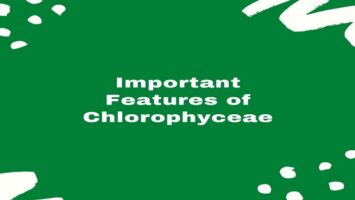Table of Contents
Factors Influencing Cell Differentiation:
With the development of modern ideas, biologists are beginning to understand the basis of cellular differentiation. Embryologists tell us that every cell in an undifferentiated embryo has a predetermined fate. Experiments were conducted in which a part of the embryonic tissue was transplanted into another in a different location. It was seen that the transplanted tissue in the new location did not conform to the normal pattern but developed into a pattern that was directed by the new location. This suggested that the cellular environment is one of the deciding factors in differentiation. Significantly, after some time during the course of development, the transplanted cells change their behavior and proceed on their predetermined path of differentiation. The environment does not play a role anymore. This observation gave rise to the axiom that heredity and environment are two inseparable factors that determine the differentiating characteristics of the cell.
Generally speaking, there are two classes of factors that determine the fate of a given cell and its divisional products. Certain of these factors are intrinsic- localized within the cell themselves, while others are extrinsic, which depends upon the influences from outside the cell.
Role of Intrinsic Factors:
It has been amply demonstrated that the development and differentiation of embryonic cells are dependent on intrinsic factors. For example, the egg of a sea urchin exhibits a definite polarity, the animal and vegetal poles constituting the animal-vegetal axis. A definite metabolic gradient exists along this axis. The first division plane of the sea urchin egg is along the animal-vegetal axis. If the two resulting cells are separated and maintained under appropriate conditions, each cell develops into a sea urchin larva, because the cytoplasmic inclusions are almost identical in each cell. The second division is at the right angle to the first one, producing four cells having an equal amount of cytoplasmic material. If these four cells are separated and allowed to develop in an ideal environment, each cell develops into a larva. The third division is perpendicular to the animal-vegetal axis, resulting in an eight-celled stage, with four cells in each pole. The four cells of the animal pole are different from the cells at the vegetal pole in their cytoplasmic inclusions. When these cells are isolated, they do not develop into normal larvae. It may be concluded that embryonic development depends upon the cytoplasmic factors distributed along the animal-vegetal axis.
Role of Extrinsic Factors:
Extrinsic factors also influence embryonic development. For example, the differences in oxygen availability and the opportunity for waste removal which exist between cells at the surface of an embryo and those that lie more deeply result in different metabolic and divisional rates. Besides, there are groups of cells which exert influence on other cells. Such cells function as organizers which participate in the differentiation of cells into specific organs.
Totipotency:
When a zygote undergoes repeated divisions, a mass of cells is produced which are totipotent, i.e., each cell in its early embryonic stage has the total genetic potential to develop into a complete individual. As the embryo grows and develops further, cells become differentiated along some predetermined path subject to the influence of genes. If cells of the differentiated embryo are isolated and cultured in a suitable medium under controlled conditions, each cell fails to develop into a whole organism. However, the cultured cell develops into a predetermined path, i.e., the cell predetermined to develop into an eye will develop into an eye only. In conclusion, the cell destined to give rise to an eye has the potential to develop into an entire eye. Such a cell is pluripotent and ceases to exhibit totipotency.
But then the cells having identical genetic constitutions and placed in the same environment could manifest different phenotypes. How was this possible? It is presumed that hereditary differences may be imposed on the cell during the course of development. Weismann, the protagonist of the famous ‘germplasm’ theory, suggested that differentiation is due to the expression of certain chromosome segments into different tissues. His assumption was that a complete chromosome complement was retained by the cells which were supposed to give rise to gametes in order to provide genetic continuity. This theory had to be discarded since the somatic cells of all the organisms have the same chromosomal complement. Later, analysis of the genetic material of the somatic cells indicated that each cell has the same DNA content and the difference between cell types is not due to differences in genetic information content.
Biologists then started looking for a more suitable explanation for the hereditary nature of cell differentiation. Having accepted the fact that the genetic equipment of every somatic cell is identical, the concept of plasmagene was formulated. Plasmagenes are gene-like elements, which are synthesized in the nucleus under special conditions and later released in the cytoplasm. The plasmagenes are thought to replicate during development, with a capacity to induce differentiation. The plasmagene theory was not acceptable to cell biologists for lack of direct evidence, although fragments of DNA are found associated with certain organelles in the cytoplasm.
Genes Control Differentiation:
With the development of advanced analytical techniques in molecular biology, a more plausible proof was available which suggested that cell differentiation was under the control of gene function. Earlier the same view was discarded that genetic constitution was not responsible for differentiation. It has been successfully demonstrated that every tissue or cell has a specific protein and a specific complement of enzymes that are produced by genes. Genes do not produce these tissues-specific proteins directly, but through an intermediate- the messenger RNA. During the differentiating process, certain genes are activated, while others are switched off. The activated genes may produce specific proteins that may lead to the specialization of a cell type. Hence, the process of cell differentiation is due to the cell’s ability to synthesize different kinds of proteins. Then the problem arises: ‘How a given set of genes are switched on and the others suppressed?’. Scientists are only trying to probe this intriguing question and we do not know the answer yet. Before we go into different theories and mechanisms of differentiation, it would be worthwhile to consider the nature of differentiation in different types of organisms.









Comments (No)